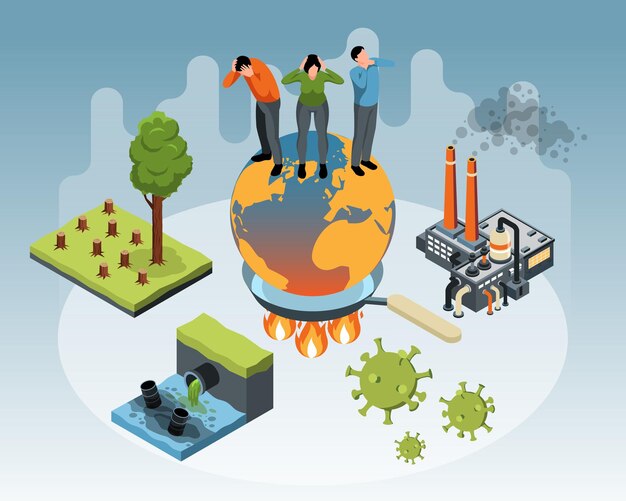
The Hidden Cost Of Technology: Environmental Impact Of E-Waste
Table of Content
Still, did you realize that the average consumer in the United States of America throws away almost 40-50 pounds of electronic waste (e-waste) per year? This is a Brand New Record of how many computers, smart phones, television sets and other electronic devices go into the garbage dump every year.
E-waste is more than just a nuisance; it's a ticking time bomb for our planet. Improperly disposed of, these devices unleash a toxic cocktail of harmful substances into the environment, posing serious threats to human health and wildlife. But the impact of e-waste extends beyond the environment – it also carries a significant emotional toll on individuals and communities.
Environmental Harms of E-Waste:
-
Poisoning Our Planet: E-waste is a cocktail of valuable and hazardous materials. It contains precious metals like gold and silver, but also toxic substances like lead, mercury, cadmium, and chromium. These toxins can leach into the soil and water, contaminating our food and water sources. This contributes to soil contamination, water pollution, and environmental degradation. According to the Environmental Protection Agency (EPA), e-waste is the fastest-growing waste stream in the United States.
-
A Threat to Wildlife: Wildlife often encounters discarded electronics in their habitats. Animals can mistake discarded electronics for food, leading to ingestion and poisoning. The toxic chemicals in e-waste can also accumulate in the food chain, impacting entire ecosystems. This can lead to wildlife endangerment, habitat destruction, and biodiversity loss. The UN Environment Programme reports that improper e-waste disposal poses a significant threat to biodiversity and ecosystem health.
-
Human Health Concerns: Exposure to toxic chemicals in e-waste can have serious health consequences for humans. These can include respiratory problems, neurological disorders, reproductive issues, and even cancer. This can increase the risk of chronic diseases, birth defects, and developmental delays. The World Health Organization (WHO) has recognized the serious health risks associated with exposure to e-waste.
The Emotional Impact of E-Waste:
Beyond the immediate environmental consequences, e-waste can have a profound emotional impact on individuals and communities:
-
Anxiety and Guilt: Many people experience anxiety and guilt knowing that their discarded electronics may be contributing to environmental harm. This can lead to feelings of helplessness and powerlessness.
-
Community Disruption: Improper e-waste disposal can have a significant impact on communities, particularly in developing countries where e-waste is often illegally dumped. This can lead to environmental degradation, health problems, and social disruption.
-
Loss of Connection to Nature: As our planet's ecosystems are increasingly degraded by e-waste and other forms of pollution, we lose our connection to nature and the sense of wonder and awe that it inspires.
Taking Action: What You Can Do to reduce E-Waste:
-
Find Your Local E-waste Recycling Center: Find out and identify specific centres for the collection of e-waste in your area. Most facilities are from where residents can drop-off large items at little or no cost. Recycling of electronics in many of the cities/towns in America involves taking your electronic waste to any of the friendly recycling centers or hardware stores or even during some of the regular rates e-waste collection events. For specific locations of where they can dispose of these items and the frequency with which they can dispose of them, contact your state or local government website or the sanitation department.
-
Donate or Sell Your Old Electronics: You may also give your old devices to charitable organizations such as Goodwill, Salvation Army for donation or selling your gadgets to players like Gazelle or Decluttr for refurbishing. mean they will have another use and will not end up as waste going to the landfill.
-
Purchase Refurbished Devices: Opt for refurbished electronics whenever possible. This is a sustainable and cost-effective way to acquire new-to-you devices. Many online retailers and local electronics stores offer certified refurbished options.
-
Extend the Lifespan of Your Devices: Follow these simple electronics care tips to have a longer life span on your gadgets. This includes cleanliness, software upgrades and fixes from time to time.
-
Support Eco-Friendly Manufacturers: Select electronics that are from companies who are environmentally responsible for instance through recycling, and use of unsafe compounds. Other labels to look for are EPEAT (Electronic Product Environmental Assessment Tool).
-
Advocate for Change: Support policies that promote responsible e-waste management and hold manufacturers accountable for the environmental impact of their products. Contact your elected officials and urge them to support legislation that promotes e-waste recycling and reduces electronic waste.
Call to Action:
Share this information with your friends, family, and community to raise awareness about the environmental impact of e-waste and encourage responsible disposal practices. Together, we can make a difference!
Disclaimer: This blog post is for informational purposes only and does not constitute professional advice.















